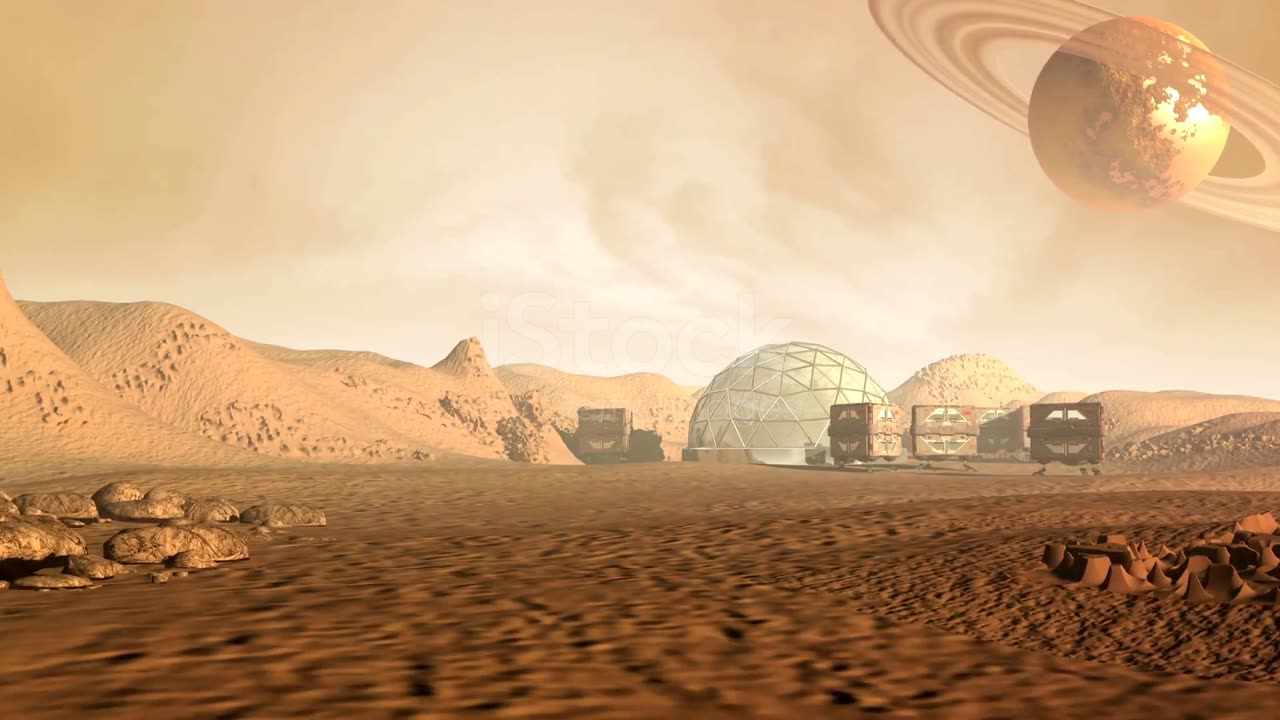Premium Only Content

This is How First Humans Will Survive on Mars 2025
Surviving on Mars is a complex challenge that involves a combination of advanced technology, careful planning, and adaptation to the harsh Martian environment. While we haven't yet sent humans to Mars as of my last knowledge update in September 2021, several proposed strategies and concepts have been discussed for how the first humans could survive on the Red Planet. Here's an overview of some key aspects:
1. **Transport and Arrival:** Getting humans to Mars safely is the first step. This involves spacecraft capable of carrying humans, life support systems, and supplies for the journey that could last several months.
2. **Habitats:** Once on Mars, humans would need habitats to protect them from the thin atmosphere, extreme temperatures, and high levels of radiation. These habitats could be pre-deployed roboticically or constructed using local resources.
3. **Life Support Systems:** Reliable life support systems are essential to provide breathable air, potable water, and a controlled environment for humans to live and work in. These systems would need to be efficient and capable of recycling waste products.
4. **Food Production:** Relying solely on Earth for food would be unsustainable and expensive. Martian settlers would likely need to grow their own food using hydroponics, aeroponics, or other advanced agricultural techniques in controlled environments.
5. **Water:** Mars has frozen water at its poles and likely some subsurface water. Extracting, purifying, and efficiently using this water would be crucial for drinking, agriculture, and various industrial processes.
6. **Energy:** Solar power is a logical choice on Mars due to its abundant sunlight. Advanced solar panels and energy storage systems would be necessary to power habitats, equipment, and life support systems.
7. **Protection from Radiation:** Mars lacks a strong magnetic field and thick atmosphere, resulting in higher levels of surface radiation compared to Earth. Habitats could be shielded with thick walls or built underground to reduce exposure.
8. **Suitable Clothing and Gear:** The Martian environment requires specialized spacesuits and equipment to protect astronauts from the extreme cold, low pressure, and abrasive dust.
9. **Communication:** Establishing reliable communication between Mars and Earth is essential for coordination, emergency assistance, and maintaining mental well-being.
10. **Mental and Physical Health:** Long-duration space travel and isolation can have psychological and physiological effects. Crew members would need strategies to cope with the challenges and potential isolation.
11. **Exploration and Resource Utilization:** Initial missions would likely focus on exploring the Martian surface, identifying resources, and setting up infrastructure for future missions.
12. **Technological Innovation:** Surviving on Mars will require continuous technological advancement. Research and development would be ongoing to address challenges and improve the efficiency of systems.
It's important to note that the journey to Mars and establishing a sustainable presence there is a long-term goal that will require international cooperation, significant resources, and a step-by-step approach. The first missions might involve short stays with return trips, gradually building up to longer stays and eventually establishing a self-sustaining colony. Additionally, advancements in robotics and autonomous systems could play a critical role in setting up infrastructure and performing tasks in advance of human arrivals.
Keep in mind that developments beyond my last update in September 2021 are not included in this response, so I recommend checking more recent sources for the latest information on plans and progress related to human survival on Mars.
-
 LIVE
LIVE
Sarah Westall
1 hour agoHidden Forces: Global Pushback from Lockdowns, Starvation and Death is Real w/ John Tamny
124 watching -
 LIVE
LIVE
SynthTrax & DJ Cheezus Livestreams
1 day agoFriday Night Synthwave 80s 90s Electronica and more DJ MIX Livestream FUTUREPROOF / VARIETY Edition
109 watching -
 8:59
8:59
China Uncensored
7 hours agoChina Just Declared Economic WAR On The US
9938 -
 LIVE
LIVE
LFA TV
22 hours agoLIVE & BREAKING NEWS! | FRIDAY 10/10/25
691 watching -
 2:13:12
2:13:12
Barry Cunningham
6 hours agoBREAKING NEWS: PRESIDENT TRUMP MAKES AN ANNOUNCEMENT! (AND THE FIRINGS HAVE BEGUN!)
17K28 -
 8:09:58
8:09:58
StoneMountain64
11 hours agoBattlefield 6 FULL RELEASE LAUNCH Gameplay - IT'S FINALLY TIME
5.05K -
 1:11:56
1:11:56
Edge of Wonder
5 hours ago3I/ATLAS UFO Updates & Ancient Tech Found
12.3K7 -
 10:33:08
10:33:08
GrimmHollywood
11 hours ago🔴LIVE • GRIMM HOLLYWOOD • BATTLEFIELD 6 LAUNCH • BRRRAP PACK •
1.19K4 -
 LIVE
LIVE
FusedAegisTV
15 hours agoEvo France 2025 Day 1 Re-Stream - Nice, France ∥ 3,500 ENTRANTS, R1 Pools
12 watching -
 43:09
43:09
BonginoReport
10 hours agoJOHN ROCKER UNCAGED! - Nightly Scroll w/ Hayley Caronia (Ep.153)
78.6K20